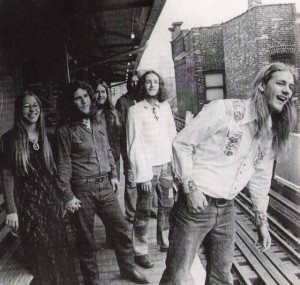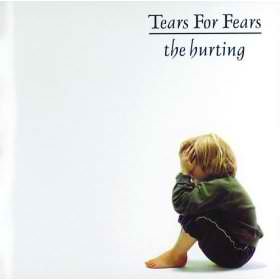
At the show my friend John and I ditched the group and headed to the front of the stage to get a closer look at the band. John and I spent the rest of the show, clad in sleeveless Union Jack t-shirts, alternately hoisting each other on our shoulders, pumping fists, banging heads and otherwise doing what normal kids do while listening to live rock and roll.
This memory floated back as I read Meghan O’Gieblyn’s piece in Guernica about her trip through the Contemporary Christian Music [CCM] scene in the ‘90s and how discovering bands such as Nirvana changed her views about both music and faith.
I was the kid, a decade and a half earlier, who trolled the local Christian book store racks for the latest Christian rock cassettes. Having gotten over the notion that the devil’s music was still the devil’s even if Christian’s were playing it and putting Christian lyrics to it, my parents were cool with the beats as long as they were pumping Christian themes into my head.
I brought with me to Moody a nice collection of the latest Petra, Randy Stonehill, Sweet Comfort Band, you name it. Those records stayed in my rotation even as my new dorm-mate adorned his walls with Iron Maiden and AC/DC posters [he was rather swiftly asked by school authorities to remove them].
Things began to change after sitting through the first few lectures from my English comp professor. She encouraged us to write short essays about our Christian experience, but without the clichés that had become the parlance of contemporary evangelical faith. She excoriated us for using terminology we couldn’t fully explain.
I’d sit down to write and find myself with little to describe my faith but the slogans that I had pumped into my head through church-going, regular attendance at bible study and, of course, my beloved music collection. I discovered I had little language of my own to describe my personal faith. I discovered that what drew me into the music were the guitar licks and the drum beats and the melodies; that the lyrics had little meaning.
 This led to a sharp sense of emptiness; a sense that I had, for 20 years, not connected my faith with any personal emotion or intellect. Indeed, I couldn’t think through why my faith was supposed to be the defining aspect of my character and my life.
This led to a sharp sense of emptiness; a sense that I had, for 20 years, not connected my faith with any personal emotion or intellect. Indeed, I couldn’t think through why my faith was supposed to be the defining aspect of my character and my life.
Somehow I got my hands on a copy of “The Hurting” by Tears for Fears. Over a long road trip with my basketball team, I listened over and over to the record, its emotional depth forcing me into a type of introspection I hadn’t previously experienced. Other bands came into the picture. Early U2 records such as “Boy” and “October” provided what I thought was safer, quasi-Christian territory. Then I discovered The Smiths and all hell broke loose.
By the time I graduated Moody I was well on my journey questioning the faith that I would eventually lose. The foundation that I had developed for my faith, or that had in a way been developed for me, turned out to be too shallow to retain, and subsequently to regain. Many things contributed to the loss, but music was at the core.
It may seem odd or even shallow to view my loss of faith thusly. I would never question what joy or closeness to god the latest Jars of Clay record might bring to others, and there are those who might rightfully question the artistic value of the records that keyed my journey [“Pale Shelter? Really?”]. But we all lean on the things that provide us with the emotional support we need at the time, and in my case it was the art of music. And if there’s a sliver of spirituality left in me, it would be more moved by any one Fleet Foxes song than the collective output of the CCM genre since its inception.
http://www.youtube.com/watch?v=DjqFaSz62QI


